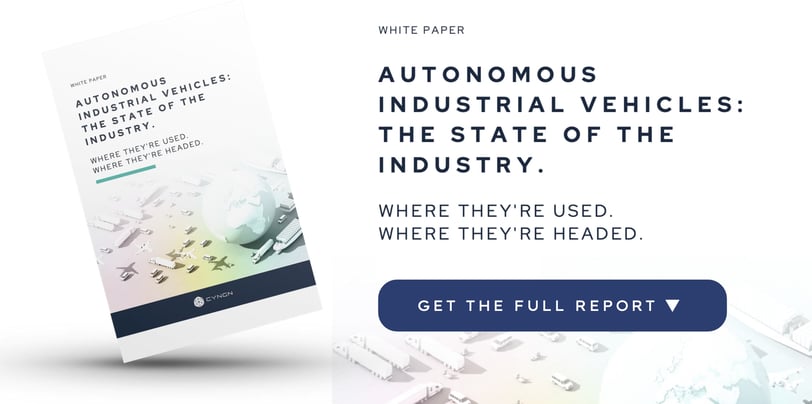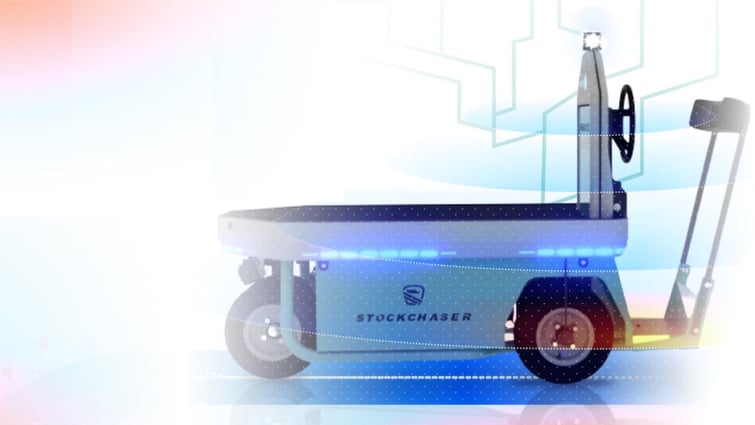Industrial automation is much more than just a new line of gadgets that yield small, incremental improvements… companies can literally transform their organization to new levels of productivity. Let’s briefly touch upon some of the ways industrial autonomy transforms efficiency and addresses common challenges.
Addressing Labor Shortages
Labor shortages rank in the top 4 greatest challenges facing manufacturing, transportation, and supply chain leaders, with over 50% citing employee retention as their single biggest challenge. When we consider that it takes 30-60 days to fill an open position, plus additional time for training and onboarding, the enormous impact of employee hiring and retention on productivity becomes clear. It is estimated that by 2030, the impact of manufacturing jobs that remain unfilled could cost the US economy more than $1 trillion.
Autonomous vehicles can address this issue head-on by taking on repetitive tasks and transport routes, freeing up an estimated 30%-50% of a skilled worker’s time. Companies can accommodate increased production with fewer labor resources, while shifting workers’ focus to higher-value tasks.
Boredom & Error
Relieving skilled workers from monotonous tasks, such as driving goods around huge facilities, contributes more benefit than just freeing up their time. Tedium should be taken very seriously. It’s associated with errors, safety issues, lower morale, and employee churn. A study by Vanson Bourne found that a whopping 23% of unplanned downtime is caused by human error alone.
Efficiency: Increased Production with Decreased Costs
By taking on redundant tasks, coupled with their ability to operate continuously, autonomous vehicles improve throughput, allowing companies to reap significant operational efficiency gains. A recent report from Sapio Research, “Automation for Intralogistics”, revealed key results after implementing automation were 48% improvement in productivity, and 42% decrease in operating costs.
Agility
AVs offer the ability to move goods with greater flexibility. Previously, manufacturing depended on transport methods such as fixed conveyance to move goods; however, conveyance is costly and lacks agility. By contrast, redesigning a vehicle’s route in a facility, or choosing from a variety of saved missions, takes only minutes in AV software.
In less predictable environments where conveyance was not ideal, manufacturers relied on skilled human workers to drive goods; another job far more suited for AMRs (autonomous mobile robots).
AVs not only allow for agile route and workflow changes, they are also instrumental shifts toward decentralized manufacturing.
Scalability
As AVs free up skilled workers’ time, organizations can accommodate considerable growth without having to spend more on additional labor resources. Restructuring workflow and reprogramming routes are simple processes with autonomous industrial vehicles, which can be executed in a matter of minutes. This allows organizations to rapidly adapt to increased demand and changes in logistics flows.
Safety Considerations
Safety is a major consideration leading companies to shift to AGVs and AMRs. The US Bureau of Labor Statistics states that from 2011 to 2017, 614 workers lost their lives in forklift related incidents. Moreover, the organization further estimates 7,000 nonfatal injuries each year, triggering invasive safety inspections and expensive workers’ comp claims.
The average industrial accident costs $42,000, not including associated production losses, and the average American warehouse experiences 9 accidents per year. The total cost of preventable workplace injuries in the US in 2019 was $171 billion.
In stark contrast, the Material Handling Institute (MHI) reports zero known AGV-related injuries.
Of course, any warehouse, site, or plant manager knows that a sizable chunk of safety violations do not result in injury; a safety issue may be as simple as a vehicle’s mirror getting clipped while turning a tight corner. Nonetheless, these minor occurrences require incident reports and slow the day’s production. We hear you barking, Big Dog.
As we’ll discuss in later sections, industries across the board recognize the immediate value of improved safety that autonomous industrial vehicles provide when humans aren’t involved, such as in dangerous environments or in the handling of hazardous materials.
This chapter is an excerpt from our industry report, Autonomous Industrial Vehicles: The State of the Industry. Access the full report here and learn about the $300 Billion AV Industry and where it's headed.

